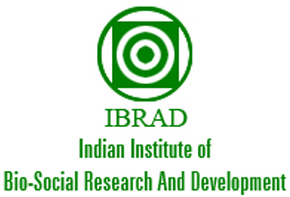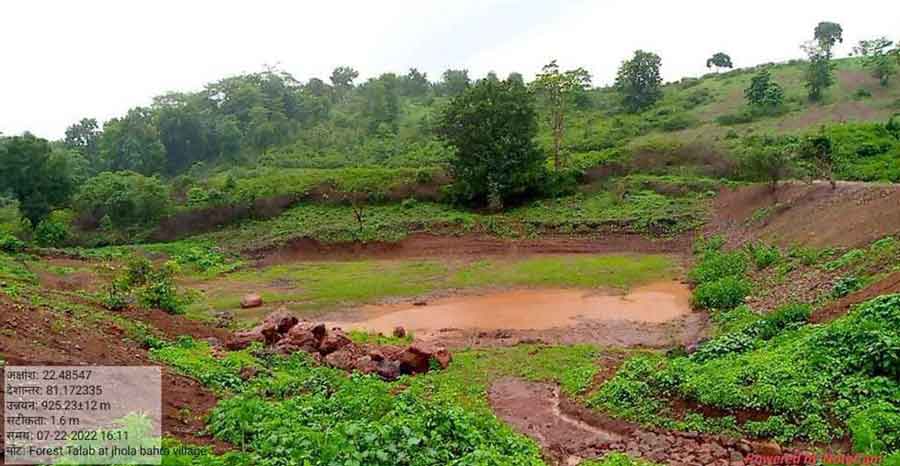Integrated Forest Mosaic Landscape Management
The forest mosaic landscape consists of several co-existing and interdependent natural ecosystems like freshwater, agricultural lands and pasture lands. The health and functioning of the forest ecosystems cannot be improved in isolation without considering other interdependent ecosystems of the forest mosaic landscape. People, particularly the tribal community, are an essential part of the forest mosaic landscape. The life and livelihood of these people depend on forests. On the other hand, the cultural practices and actions of these people also strongly influence the natural ecosystems. The degradation of forests due to land-use changes, overexploitation and loss of biodiversity have had serious implications on food security due to loss of indigenous seeds, disruption of nutrient and water recycling, natural pollination and biological pest control. This is causing a reduction of supply of worldwide supply of food, fibre, timber, medicinal plants, fuel etc, threatening the food and livelihood security of millions of people.
The integrated forest mosaic landscape management approach focuses upon
- Functioning of the Ecosystem rather than species in isolation. Ecosystem restoration requires focusing on the functional diversity of tree species assemblages, plant genetic diversity and above–below–ground linkages.
- Understanding the Fragmentation of Biological Corridor. Fragmentation of the landscape cause isolation of habitat, loss of biodiversity, breaking the chain of nutrient recycling and pollination disruption that ultimately leads to the extinction of many floral and faunal species. The fragmentation of forest landscape decreases the habitat patch sizes, resulting in increased deleterious edge effects (Laurance et al. 2007) and posing pervasive threats to the conservation of biological diversity (Wilcove et al. 1986, Wilcox and Murphy 1985).
- Forest fringe area management following the guidelines as mentioned in National Working Plan Code 2014.
IBRAD’s approach as Participatory Forest Mosaic Integrated Landscape Management considers the forest and forest fringe dwellers as a central and integral partner to reverse the process of degradation as the primary stakeholder. These people have rich traditional knowledge of forest biological diversity, biological corridors and seasonal variation of crops that is transmitted inter-generationally. The involvement of the community helps in recovering and restoring degraded ecosystems. Community is involved to conserve all the components of the forest mosaic landscape to strengthen their interdependence, sustained flow of ecosystem services and sustainable livelihood development.
Integrated forest mosaic landscape management is initiated by IBRAD in different landscapes in Odisha, Chhattisgarh and West Bengal by involving the Particularly Vulnerable Tribal Groups (PVTGs) like Lodha and Baiga communities following the steps below:
Identification of the landscape and the boundary
The forest mosaic landscape of the given area is identified through Google Map. The constituent ecosystems within the landscape are identified and their present status is analysed.
Awareness at the community level through cognitive stimulation and identification of proactive members
The interdependence between the five essential components of the forest mosaic landscape – Forest, Water, Agriculture Land, Livestock and Human Being is reinforced through Ecochain – PANCHATAWA exercise at the village level. The approach developed by IBRAD helps in cognitive stimulation and logical thinking among the community and changes their World View. The entire exercise is done without advising the community on what is to be done. Rather, four questions are asked to stimulate their thought process to understand the interdependence of different components, focus on the problem and the need for conservation of the components through collective action. At the end of the exercise, some proactive self-initiated community organisers (SICO) are identified and a group is formed with clearly defined roles, rules and control mechanism.
Community institution-building and control mechanism
Once the group is formed their roles, rules and control mechanism is developed and rigorously practised.
Participatory Rural Appraisal (PRA) and Capacity Building
Involve the community through PRA exercises to identify the local ecosystems, their existing status, drivers of degradation and explore options for reversing the process of degradation. Particular focus is given to identify the nature of fragmentation of the forest and fringe areas and scope for conservation. During the process the training need assessment of the community is done, capacity building modules are prepared and training conducted.
Trade-off analysis and micro planning
The community is involved to develop a micro plan of their village for conserving the natural ecosystems and ensuring conservation-based sustainable livelihood development based on Trade-off analysis. Community themselves analyse between the short term gain vis a vis long term gain among the competitive land uses and develop a consensus to improve the synergies by reducing the degradation even by paying price for short term losses in terms of reduced yield for a couple of years by ceasing use of chemical fertilisers and pesticides etc.
The activities for integrated forest mosaic landscape management
Identification of degree of fragmentation jointly by the community and the local forest department staff through PRA exercises, transect walk and take actions for seed sowing and plantations
Involve community to identify the rare, endemic plants which has both ecological and economic value and conservation of plant genetic diversity in the forest fringe areas through in situ conservation and ex situ conservation.
In situ conservation by capacity building of the community for non-destructive harvesting, processing and value addition of NTFPs (Non-Timber Forest Produces) for conservation-based livelihood development and
Ex-situ conservation measures for conservation of plants that are becoming rare, endangered, threatened and extinct locally. This is done first through the identification of species and developing a repository with the help of traditional health practitioners and other local people, the establishment of community and home herbal gardens.
Water conservation in the forest fringe areas
To promote and strengthen the positive interaction between the forest and agriculture, water conservation plays an important role. Forested catchments supply a high proportion of the water but much of it gets lost through runoffs causing both topsoil and water loss that are having adverse effects both on the forest biodiversity, including the plant genetic resources and agriculture.
IBRAD has involved the community to check the run off the streams by putting loose boulder check dams by using the locally available materials. It has also involved the community for rainwater harvesting through Panchgadiya.
Engaging the forest fringe villagers in activities related to livelihood both to reduce pressure on forest and also to reduce negative impact on biodiversity
IBRAD approach to identify the Agro-Forest Mosaic Landscape and involve the community in Organic Farming And Community Seed Bank for conserving indigenous seeds, as biological, genetic conservation is applied in Ghoghra, Mundadadar and Nedam villages. Forest fringe-dwellers are predominantly smallholder tribal who resort to rainfed monocroping practices. Their capacity is built to establish organic nutrition gardens for production of organic vegetables. Their capacity is also developed to produce organic inputs like bio fertilizers and bio pesticides.
Changing land use practices and introduction of locally suitable winter crops.
Establishment of community seedbanks for conservation of indigenous crops, cultivars and landraces
Promotion of Tree-based Integrated Agriculture with plantation of fruit plants and also conservation of medicinal plants.
Nursery raising for producing quality planting materials.




